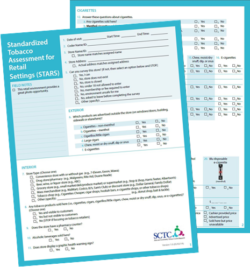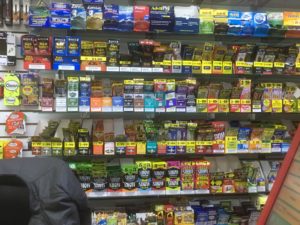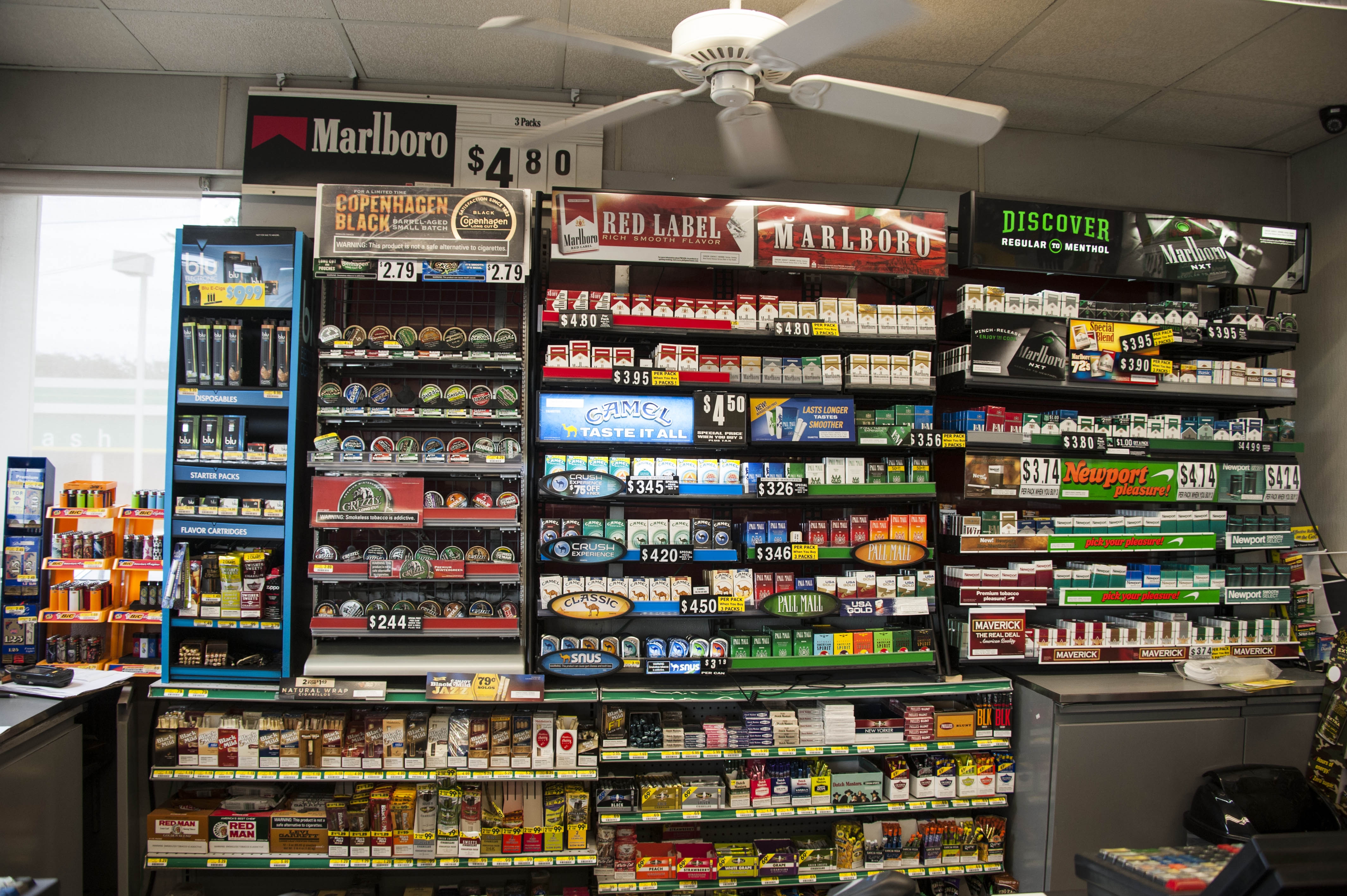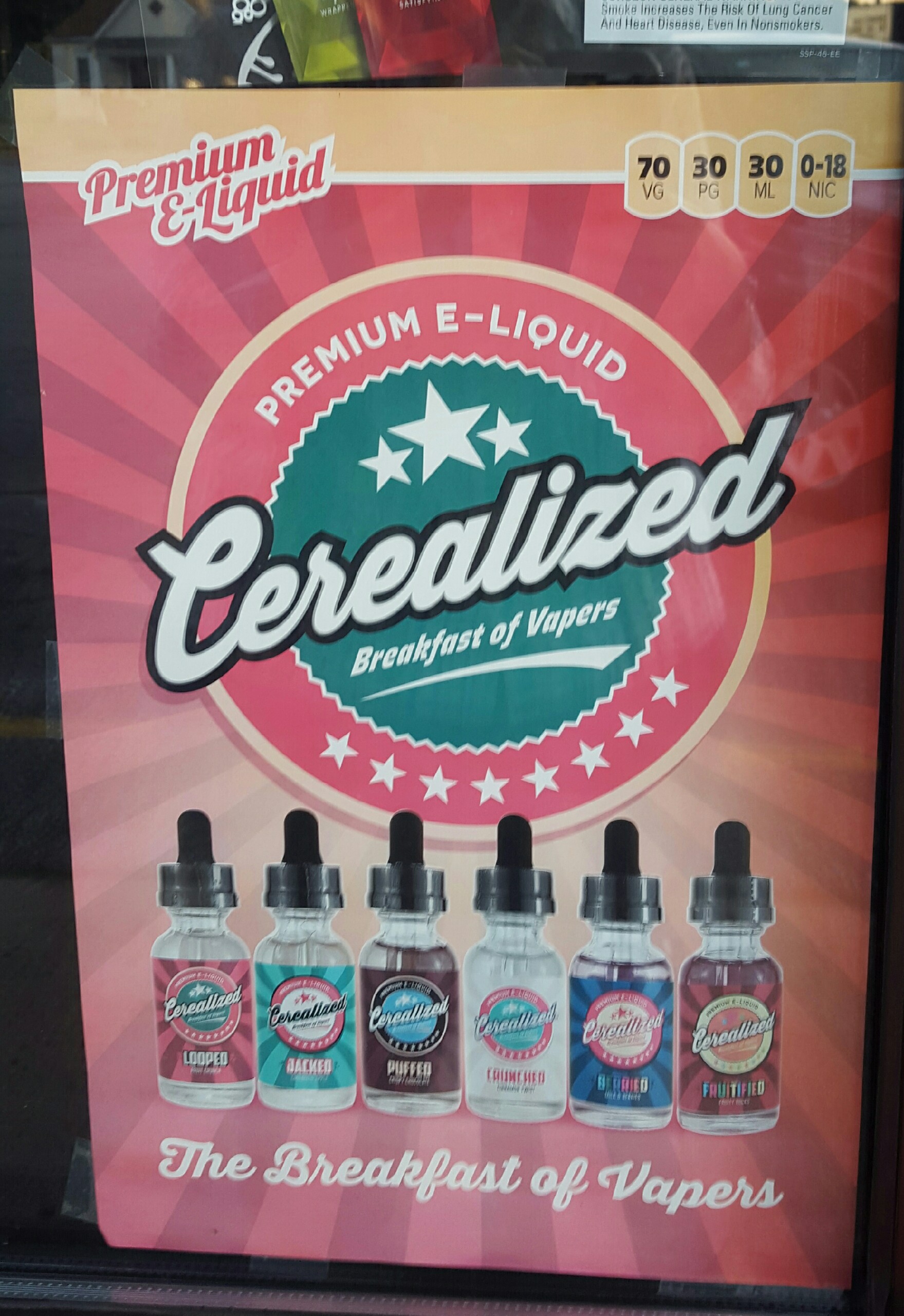Welcome to CounterTobacco.org’s “News and Research Roundup!” Each month we post a summary of the latest research, reports, and news stories on counteracting tobacco product sales and marketing at the point of sale (POS). Keeping up with what’s happening in the POS movement all across the country can help you choose policies and strategies that work best for your community. New research can help provide support for your work and evidence for the importance of the “War in the Store.” Have a story you don’t want us to miss? E-mail it to us!
New Research
Determining Policy Needs and Impact
- Identifying Disparities and Policy Needs with the STARS Surveillance Tool, Tobacco Regulatory Science
-

STARS In Milwaukee, WI, the Standardized Tobacco Assessment for Retail Environments (STARS) was used to identify and document disparities in the tobacco retail environment. Three demographically distinct zip code clusters (3 predominantly African-American zip codes, 2 predominantly Latino/Hispanic zip codes, and 4 predominantly white zip codes) were selected, and community tobacco control workers and volunteers conducted store assessments at a random sample of retailers from each. They found that menthol cigarettes were more often advertised outside retailers and available at a discount in the African-American cluster. The average cheapest pack of cigarettes was $5.80 in the Hispanic cluster, $6.13 in the African-American cluster, and $6.40 in the white cluster. While e-cigarettes were more often available at stores in the white cluster, they were more often placed near candy or sold at a discount in the African-American cluster. Similarly, cigarettes were more likely to be displayed near candy, advertised within 3 ft of the floor, and sold at a discount in the African-American cluster. Little cigars/cigarillos were also more likely to be displayed near candy in the African-American cluster and were least often sold as singles or for less than $1 in the white cluster. The stakeholders involved in the project used these findings to discuss appropriate policy interventions, such as a state-level minimum floor price for cigarettes, prohibiting price discounts, and zoning restrictions to reduce point-of-sale disparities seen across the city. Following the success of this project, the Wisconsin Tobacco Prevention and Control Program adopted STARS to conduct store assessments across the state. Counter Tools provided technical assistance on the STARS tool for this project.
- Learn more about store assessments and STARS.
-
- Little filtered cigars: US sales, flavors, package sizes and prices, Tobacco Control
- Many little-filtered cigars (LFC) are functionally indistinguishable from cigarettes, but are not regulated as cigarettes are in the U.S. This proves to be problematic for coherency in policy-making and enforcement. LFCs often have characterizing flavors, which are banned in cigarettes, and LFCs are generally taxed at lower rates and available in smaller package sizes than cigarettes. In 2016, scanner data showed that sales of LFCs totaled 24,033 equivalent units per 100,000 people, of which 19.9% were menthol/mint flavored and 27.6% were other-flavored. Sales were highest in the Midwest and the South. The percentage of LFS’s sold in packs of 20 was 79.7%, with an average sales price of $2.41.This is significantly lower than the average price of a 20-pack of cigarettes, at $5.90, though prices also varied by region. Classifying LFCs as cigarettes would require them to be sold in minimum packs of 20, contain no characterizing flavors other than menthol, and be subject to increases in state and local cigarettes taxes. This could reduce their appeal to youth and price-sensitive adults and reduce the substitutions of LFCs for cigarettes.
- Single, Dual, and Poly Use of Flavored Tobacco Products Among Youths, Preventing Chronic Disease

- This study used data from the 2014 National Youth Tobacco Survey to assess risk factors for and patterns of flavored tobacco use among youth. Out of a sample of 21,926 students, 17.1% were current tobacco users, of whom 70% where current users of flavored tobacco products. This includes 42.6% who used a single flavored product, 16.8% who used two flavored products, and 10.6% who use more than two flavored products. E-cigarettes were the most commonly used flavored product and were often used with other flavored tobacco products. In fact, 77% of poly flavored-product use included e-cigarettes. Non-hispanic blacks and other races were less likely than non-Hispanic whites to report using flavored tobacco products, but not non-flavored tobacco products. Youth who were more frequently exposed to tobacco ads in stores were more likely to report dual flavored-product use and poly-flavored product use.
- Learn more about flavored tobacco products.
Advertising and Displays at the Point of Sale
- Share of advertising voice at the point-of-sale and its influence on at-risk students’ use of alternative tobacco product, Nicotine & Tobacco Research
- Research conducted in southern California collected data from 746 students from 20 different schools. In line with previous research, this study found that within a year span, adolescents’ exposure to POS tobacco advertisements were highly correlated to their increased use of cigarettes, e-cigarettes, cigars, and smokeless tobacco. In addition, when e-cigarettes and smokeless tobacco had a higher “share of advertising voice,” or a greater proportion of the total amount of tobacco advertisements at a store, adolescents reported greater use of those particular products. Researchers note that the greater share of advertising voice seen for products like e-cigarettes may be contributing to increased adolescent use of these products. Limiting the volume and/or proportion of tobacco product advertisements may help reduce youth tobacco use, though it is important to consider unintended consequences of lowering the share of advertising voice for one product while increasing the share of advertising voice of another.
- Increased attention to the tobacco power wall predicts increased smoking risk among adolescent, Addictive Behaviors
 This study evaluated how the amount of attention adolescents pay to the tobacco power wall impacts their susceptibility to future smoking. Middle and high school students shopping in a life-sized replica store who paid more attention to the tobacco power wall were more likely to be susceptible to future smoking than those who paid less attention to the powerwall, controlling for baseline susceptibility. Based on these findings, policies that decrease the ability of power walls to grab attention, such as relocating power walls elsewhere within the POS environment, and reducing the size or volume of displays in retail store may help reduce the impact of POS displays on youth smoking.
This study evaluated how the amount of attention adolescents pay to the tobacco power wall impacts their susceptibility to future smoking. Middle and high school students shopping in a life-sized replica store who paid more attention to the tobacco power wall were more likely to be susceptible to future smoking than those who paid less attention to the powerwall, controlling for baseline susceptibility. Based on these findings, policies that decrease the ability of power walls to grab attention, such as relocating power walls elsewhere within the POS environment, and reducing the size or volume of displays in retail store may help reduce the impact of POS displays on youth smoking.
- Impact of removing point-of-sale tobacco displays on smoking behavior among adolescents in Europe: a quasi-experimental study, Tobacco Control
- In Europe, there have been an increasing number of countries implementing point-of-sale display bans for tobacco products. By comparing individuals in countries that implemented display bans vs. countries that did not both before and 2-6 years after implementation of the ban, researchers assessed the association between the POS display bans and smoking among 15-16-year-olds, as well as their perceived accessibility of tobacco. In areas of Europe that implemented a display ban, regular smoking among adolescents dropped by 15% more than in the areas without a display ban. While perceptions of accessibility of tobacco was not associated with the bans, researchers stipulate that the drop in smoking might instead be attributed to de-normalization of tobacco as a result of the display ban.
- Learn more about restricting tobacco advertising and displays.
Enforcement at the Point of Sale
- Assessment of the US Federal Retailer Violation Rate as an Estimate of the Proportion of Retailers That Illegally Sell Tobacco to Adolescents, JAMA Pediatrics
- A recent study showed that although progress is being made in regards to tobacco sales to minors, retailers are still continuing to violate both state and federal laws by selling to underage adolescents. Surveys conducted at a sample of 201 stores in one Colorado county between October 6th, 2012 and September 8th, 2013 found that out of 6 visits to each retailer, 51% of retailers sold to an underage person at least once, a rate that is three times higher than the average violation rate based on single visit per retailer. In addition, 26.4% of retailers violated at least twice, and 11.9% violated half or more times of the six visits. While more studies with larger sample sizes will be needed, researchers concluded that enforcement protocols should reflect that retailers do not respond consistently when adolescents try to buy tobacco products, as well as that many retailers are not properly validating IDs and the age of the buyer.
- News story: More U.S. stores likely sell cigarettes to minors than reported, Reuters
- Cigarette and smokeless tobacco company smartphone applications, Tobacco Control

- In November 2017, researchers identified 4 cigarette and 1 smokeless tobacco brand-sponsored apps on the Google Play store after searching for apps sponsored by all top-selling brands. Given that 88% of adults in the U.S. own smartphones, tobacco companies are utilizing branded smartphone apps to engage their customers. The apps provide product information and may motivate sales with mobile coupons. The main feature of all the apps was location-based, time-sensitive coupons that users can redeem in the retail environment. The apps access the users’ location, provide them with a map of nearby stores, and then provide them with coupons that can be used at those specific stores. The researchers suggest that cessation interventions could consider reminding their target audiences to delete these apps to support their attempts to quit.
- Learn about options for prohibiting the redemption of coupons at the point of sale.
- Ending tobacco sales in pharmacies: A qualitative study, Journal of the American Pharmacist Association
- Both California and Massachusetts have been taking the lead in efforts to prohibit the sale of tobacco products at pharmacies. During the study, researchers interviewed key informants who were involved in the process of both adopting and enforcing tobacco-free policy laws in those two states (i.e. local health department directors, directors of tobacco control divisions, governmental leaders, and tobacco coalition leaders). The research found there were few barriers to adoption or implementation and that the policy is becoming less controversial and more of a norm for both the public and pharmacy retailers. In addition, involving local youth groups helped raise awareness of the policy and attract media attention to the policy effort. Independent pharmacies that were early adopters of ending tobacco sales also helped reduce resistance to the policy. These findings may be useful for decision makers considering implementing tobacco-free pharmacy laws in their communities.
- Learn more about tobacco-free pharmacy policies
Industry News
- Circle K Winning Fans With Tobacco Club, CSP Daily News
- FDA to Revisit the New Product Application Process, CSP Daily News
- FDA Looks Back on Year One of New Tobacco Roadmap, CS News
POS Policy in the Media
Tobacco 21
- Avon to consider raising minimum age to purchase tobacco products from 18 to 21,VailDaily
- Tobacco 21 takes giant step in Putnam County, MidHudson News
- Underage tobacco sales still a problem in Oregon and Columbia County, The Chronicle
E-cigarettes & Vaping
- Teen vaping: FDA eyes ban on flavored e-cigarette liquids, USA Today
- E-cigarette maker Juul targeted teens with false claims of safety, lawsuit says, The Washington Post
- FDA adds warning labels to e-cigarettes; youth use of nicotine devices in Minnesota has skyrocketed, The Kenyon Leader
- E-cigarette sales soared as prices fell, CDC study finds, NBC News
- Tobacco ‘power wall’ linked to adolescents’ views about e-cigarettes, Eureka Alert
- Utah health departments get new charge to enforce vaping laws, Standard Examiner
- Juul Labs E-Cigarette Sales Continue to Rise as Kids Head Back to School, Fortune
- Advocates pressuring FDA to limit e-cigarette usage among minors, ABC 11
- Colorado Teens Don’t See Vaping As Risky As Tobacco. Nearly Half Have Tried E-Cigarettes, Colorado Public Radio
- Ridgewood vape shops may join those in other NJ towns required to pay for costly license, North Jersey.com
Flavored Tobacco
- Beverly Hills City Council bans flavored tobacco products, Beverly Press
- Cigar Makers Skirt Flavor Bans With Ambiguous Labels, MedPage Today
- Flavored tobacco may be banned in town, Lowell Sun
Other
- Walgreens stores stop sale of cigarettes in Gainesville, Florida, Washington Times
- ‘Hookah smoking not a healthier alternative to cigarettes’, Daily Times
- For Your Health: Curbing tobacco use through policy change, community engagement, Daily Republic
Find more stories in last month’s News and Research Roundup.
Know of a story that we missed? Email us, and we’ll be sure to include it in next month’s roundup!


